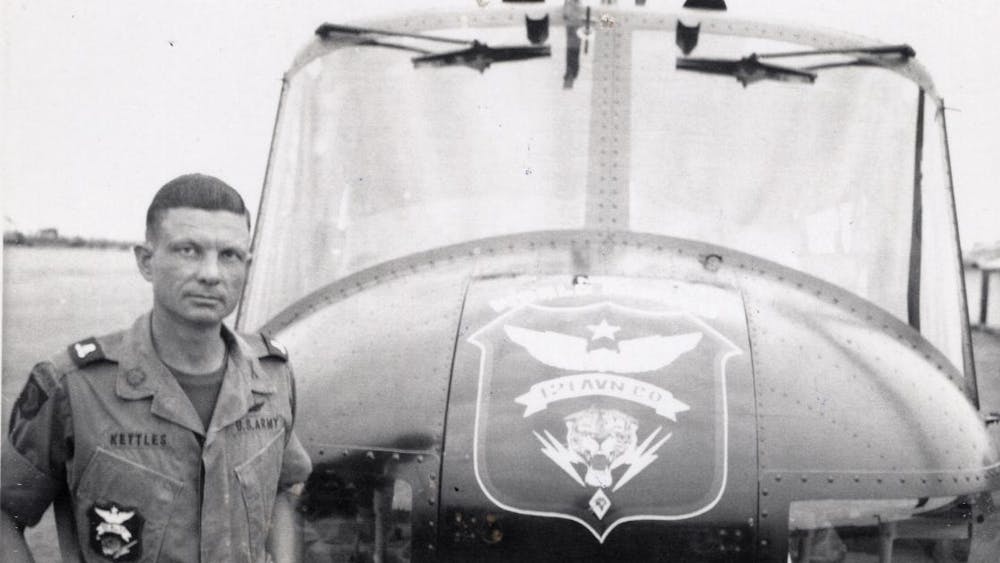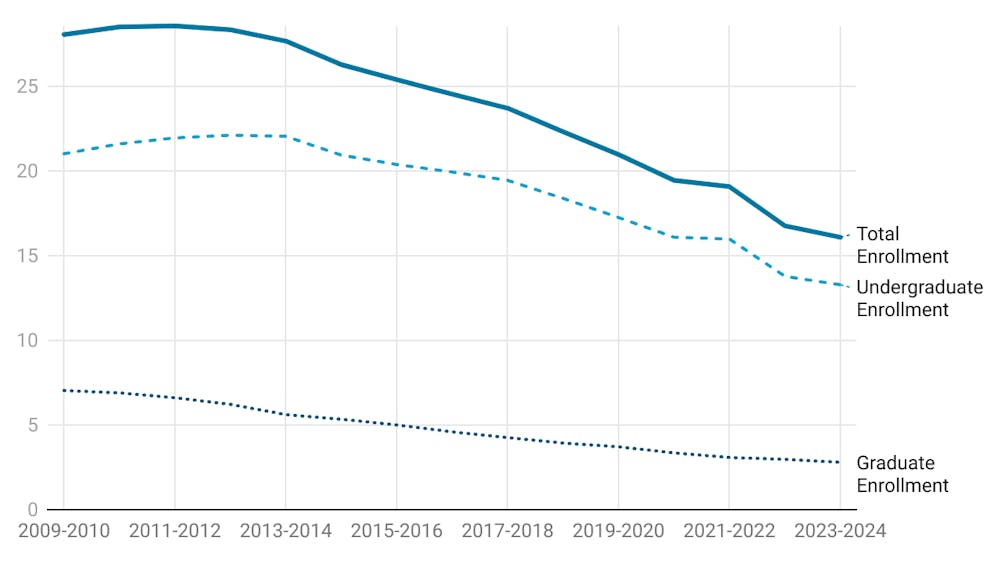The second day of the trial of Detroit-native Ed Jemeal Thomas for the murder of Eastern Michigan University wide receiver Demarius Reed started at 8 a.m. on Thursday. The final arguments will convene at 8 a.m. on Monday.
The most crucial part of the case for the prosecution was that of Kristopher Pratt, who was sentenced to 18 to 30 years as part of plea deal in Reed’s murder. As part of the plea deal, he has to testify against Thomas.
Pratt testified he went to Detroit with Thomas and two other friends on Oct. 17. The two went to Popio’s, the same Ypsilanti club that Reed was at, but ended up going to an after party in the same building Reed was in when they could not get into Popio’s.
They ended up leaving early and Pratt said they were in the parking lot when Thomas pointed Reed out.
He said Thomas suggested to rob Reed as they saw him walk past.
Nimish Ganatra, the assistant prosecuting attorney for Washtenaw County, asked Pratt what happened after Thomas suggested the robbery.
“He walked in [the complex],” Pratt said, “was walking up the stairs. I grabbed him.”
“And where was Ed at that point?” Ganatra asked.
“He was still outside. We get into a tussle,” Pratt said. “That’s when Ed came in.”
Pratt said Ed struck Reed, knocking Reed to the ground. That’s when Pratt started firing shots.
“I shot [Reed]. I shot him in the side,” Pratt said. “Ed went in his pockets took his phone and his watch. I saw him shaking. I shot him in the head.”
Dr. Tatar, a forensic pathologist and has served as a medical examiner in Wayne, Livingston & Washtenaw Counties, performed the autopsy on Reed the very afternoon he was found by his roommate, Julius Shelby.
“The results were that he had normal organs. They were healthy as I expected,” Cassim said. “The only injury evidence were the gunshot wounds that went though the face. The wound to the face was not a lethal injury. But the lethal injury was the gunshot wound through the chest that went through the left lung, through the heart and through the right lung causing rapid, abundant blood loss in both chest cavities.”
The weapon was recovered when Pratt was arrested. Pratt was the other suspect the prosecution says was involved in Reed’s murder in October 2013.
Pratt is already serving 18 to 30 years in a plea deal he took in Reed’s murder. He is also serving time for armed robbery and attempted murder in Harper Woods. That is when Detective Ruthenberg investigated Pratt.
After finding out Pratt was on probation, Ruthenberg had his parole officer call him in and waited in Detroit for Pratt and arrested him.
The police approached Pratt’s vehicle and found the murder weapon in the back seat. Lt. John Vorgitch, of the Harper Woods Police, assisted in arresting Pratt in securing the weapon when Pratt was arrested. He was the only officer in uniform.
“Upon my approach, I was in a fully marked scout car,” Vorgitch said, “I activated my emergency lights. Lts & Detectives approached vehicle. Ruthenbrug announced ‘Gun’ and Det. Stagerton removed Nicolas Gibby from vehicle.”
Michigan state police Detective Sergeant Shawn Kolonich of the Northville Forensics lab firearms and tool marks unit examined the shell casing recovered at the scene and the two bullets that were recovered from Reed’s body.
“What I’m looking for in fired cartridge cases are individual marks that are identifying of cartridge cases,” Kolonich said, “When firearms are manufactured, they’re not made one at a time but hundreds if not thousands at a time.”
Kolonich test fired the weapon the prosecution is presented as the murder weapon and compared the four test shots with the bullets. Because of the nature of how the weapon was made, it made positively identifying the weapon very difficult. The weapon is mass produced, making identifying the weapon harder still.
“In this case I was not being able to identify them as being fired from the same fire arm or this fire arm,” Kolonich said.
Kolonich did make clear however, that the gun was the correct caliber for the bullets and the shell casing recovered. The bullet recovered from Reed’s chest was a hollow point and a full metal jacket from his cheek. Only one casing was found at the scene.
Kolonich confired that he could not be sure whether the bullets came from the same weapon or two different weapons.
Stan Brue, an expert in gathering evidence from cell phones, noted that 14 of the 16 instances where Thomas’s cell phone interacted with cell towers in the area of Reed’s apartment on Oct. 18, 2013.
Reed was found shot dead in the stairwell of his University Green apartment building on the morning of Oct. 18.
“Is the information you gave us inconsistent with someone going to a party from Detroit to Ypsilanti?” Lawren Brown, the public defender for Thomas asked in cross examination.
Brue said no.
The map provided by the prosecution, compiled by Brue himself, included a map of cell phone activity in the greater Detroit area. Starting in Detroit, a further 14 calls were made, of various lengths, in Ypsilanti the same morning up until 10.
Pratt admitted to shooting Reed when he was cross-examined by Brown.
Going step by step, Pratt described making contact with Reed in the stairwell first without Thomas. He said there was no verbal contact between himself and Reed.
“I just grabbed him,” he said.
The last person to testify was Detective Sergeant Joseph Yuhas. He was the officer in charge of the investigation.
“When we learned Mr. Pratt was involved in the Harper Woods incident,” Yuhas said, “I went out to Harper Woods and took possession of the hand gun. Took it back to the station and it was actually sent out to the MSP lab for further analysis.”
The testimony Yuhas presented was brought under intense scrutiny by Brown, questioning his motivations, especially considering the considerable media coverage from as far away as the Miami Herald.
By noon, the defense and prosecution both rested.








